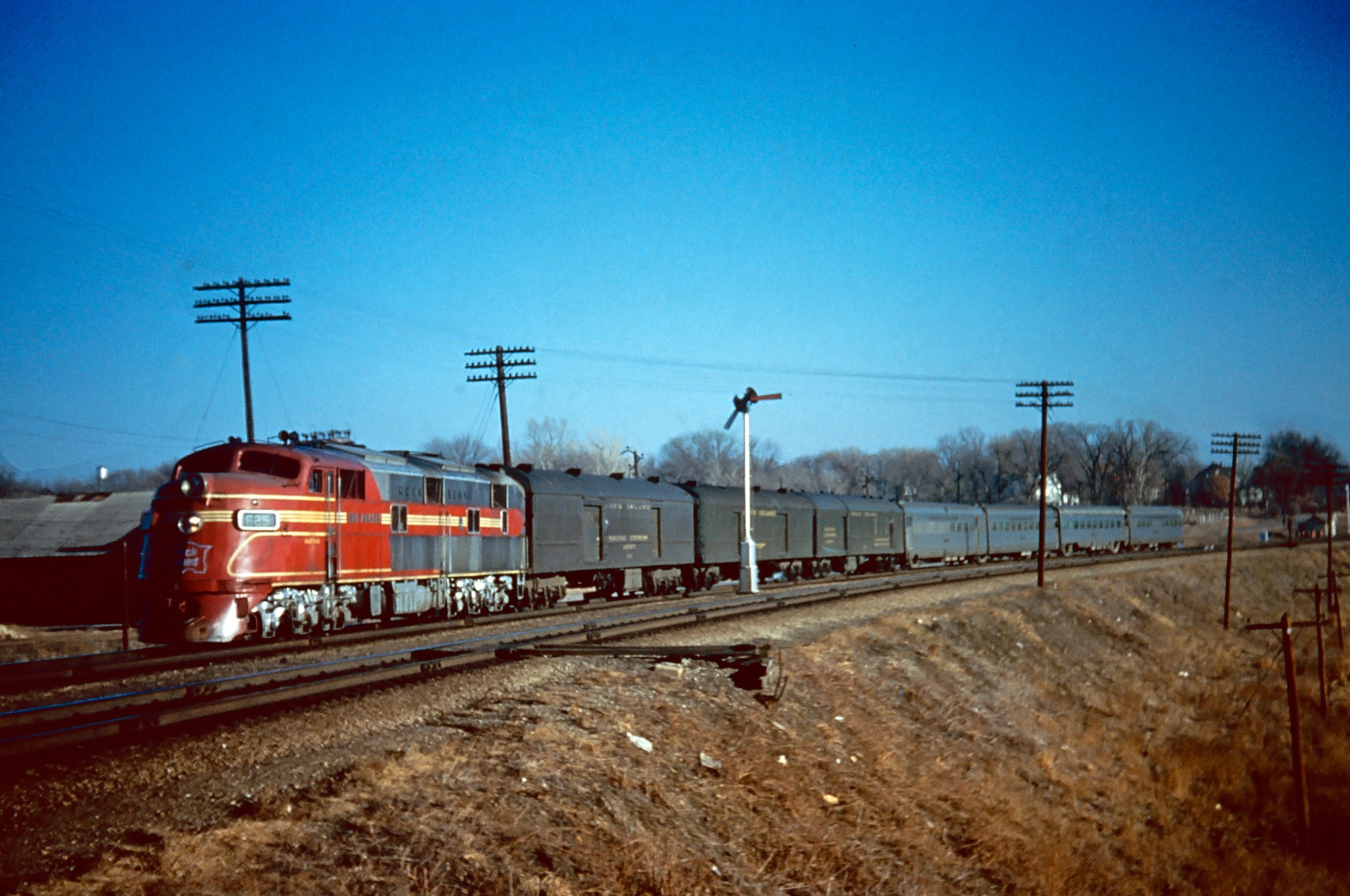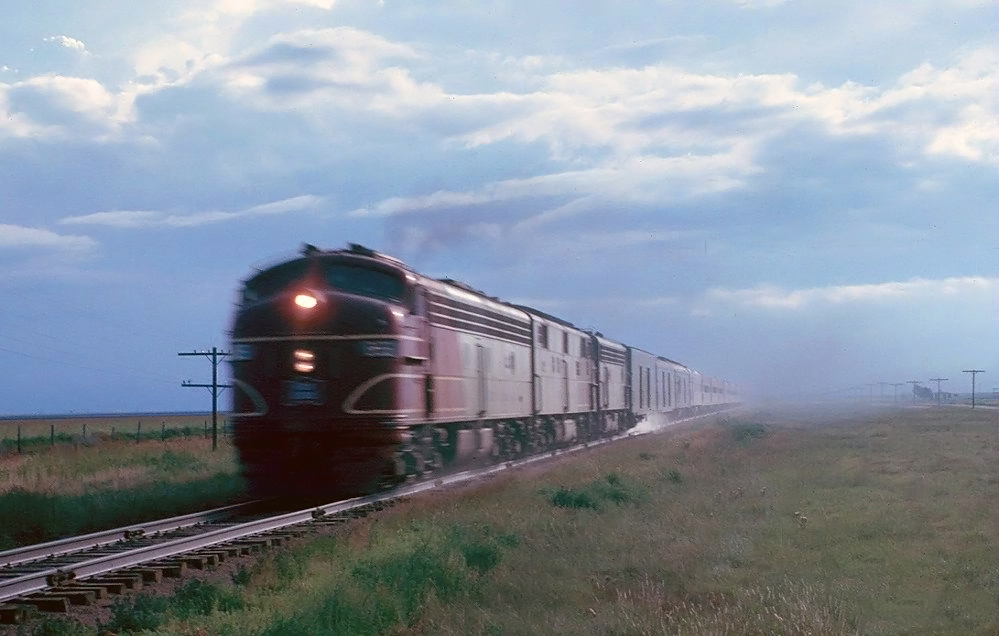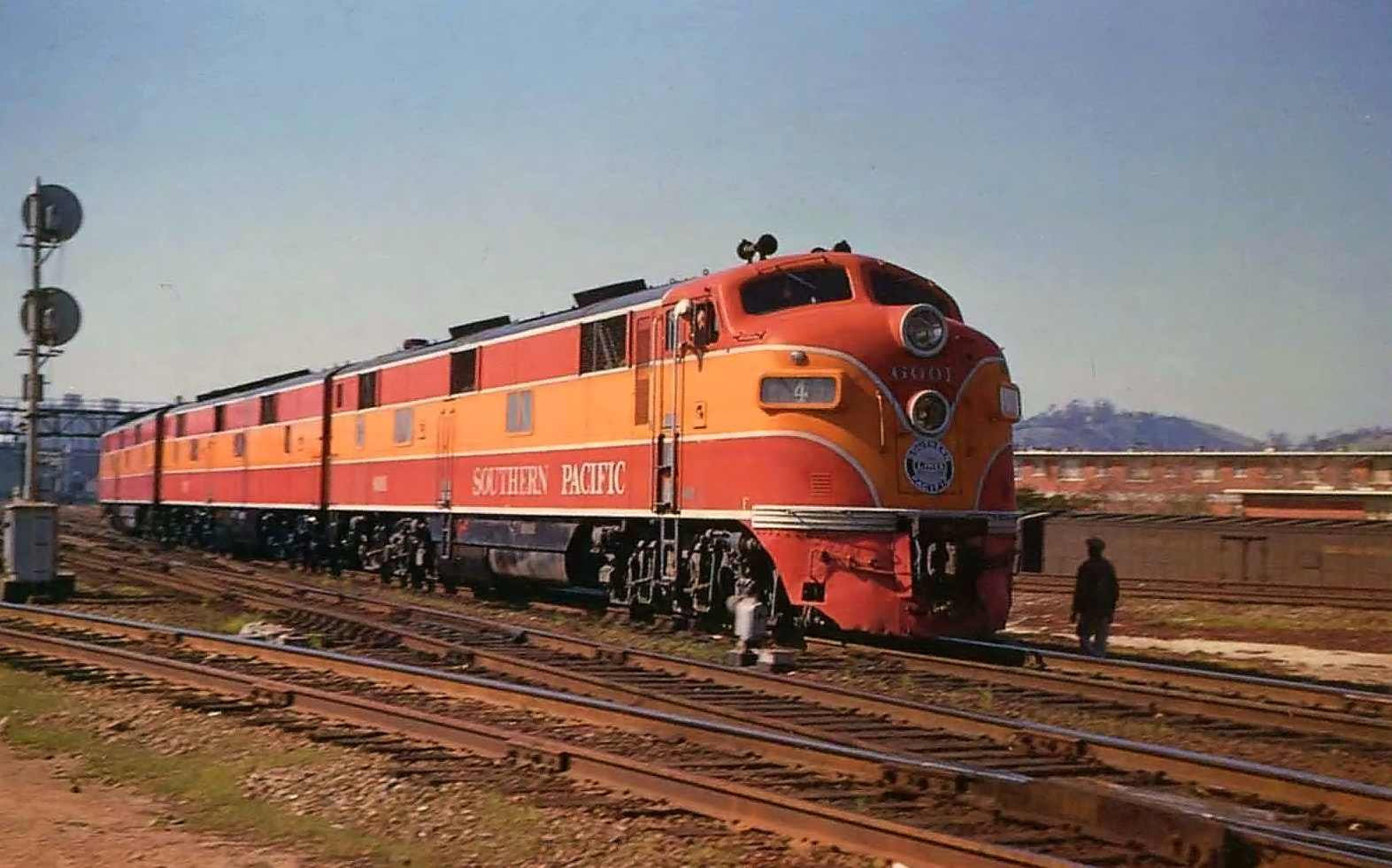The Golden State Route: A Transcontinental Corridor
Published: July 16, 2024
By: Adam Burns
The "Golden State Route" was a historically significant and crucial transcontinental rail corridor between Chicago and Los Angeles via Tucumcari, New Mexico and El Paso, Texas.
This rail line was considered one of Southern Pacific's and Rock Island's primary routes, playing a critical role in freight and passenger transport.
Between 1902 and 1968, Southern Pacific and Rock Island jointly operated the Golden State Limited/Golden State along the 2,340-mile corridor.
The luxurious Golden State offered travelers an alternative to its main competitor, the Santa Fe. This rivalry spurred both carriers to provide superior service and amenities, underscoring the importance of the route in the competitive landscape of American rail travel.
This article offers a brief history of this route, covering its origins, development, operations, and eventual integration into modern rail infrastructure.
 Rock Island E3A #625 has train #39, the westbound "Imperial," operating over the Union Pacific near Kansas City, circa 1955. American-Rails.com collection.
Rock Island E3A #625 has train #39, the westbound "Imperial," operating over the Union Pacific near Kansas City, circa 1955. American-Rails.com collection.Route Development
The origins of the Golden State Route can be traced back to the late 19th and early 20th centuries, a period marked by rapid expansion and consolidation in the American railroad industry.
The route was initially pieced together through various acquisitions and construction projects that Southern Pacific undertook to expand its reach.
By the 1880s the burgeoning SP, under Collis Huntington's direction, had already established its Sunset Route to Texas and New Orleans.
The Rock Island's leg was not completed until the early 20th century. By 1891, the Rock had expanded its rail network to nearly 4,000 miles, establishing itself as a major system in the Midwest.
Although growth slowed for about a decade, the arrival of new leadership through the Reid-Moore Syndicate in 1901 revitalized expansion efforts.
Under this new direction, the renowned "Choctaw Route" was developed, and the "Golden State Route" was completed in February 1902, connecting Liberal, Kansas, to the El Paso & Northeastern Railroad at Santa Rosa, New Mexico.
In the summer of 1905, the El Paso & Northeastern Railroad was acquired by the El Paso & Southwestern Railroad, which subsequently became part of the Southern Pacific in 1924.
The roots of the EP&SW can be traced back to May, 1888 with the establishment of the Arizona & South Eastern Rail Road, an entity initially designed to serve the mining industry.
The railway was intended to transport copper ore from the booming mining towns of Bisbee and Douglas, Arizona, to smelters in El Paso, Texas.
It would eventually grow into an impressive, 1,000+ mile network reaching as far as Dawson, New Mexico and Benson, Arizona rivaling SP's Sunset Route.
Geographic and Strategic Importance
The Golden State Route traversed a diverse range of geographic settings, from the Midwestern plains to the arid environments of the Southwestern United States.
It played a strategic role in connecting key commercial hubs and facilitating economic growth in regions that were previously underdeveloped.
The route generally extended westward from Kansas City, crossed into Oklahoma, threaded through Texas, and continued into New Mexico and Arizona before reaching California. It provided a direct link to the Mexican border, enhancing international trade prospects.
 Rock Island's train #4, the eastbound "Golden State" (Los Angeles - Chicago), hustles through New Mexico ahead of a thunderstorm following interchange with the Southern Pacific at Tucumcari on July 28, 1962. Marty Bernard collection.
Rock Island's train #4, the eastbound "Golden State" (Los Angeles - Chicago), hustles through New Mexico ahead of a thunderstorm following interchange with the Southern Pacific at Tucumcari on July 28, 1962. Marty Bernard collection.Operations and Services
The route was a versatile corridor that served both freight and passenger operations.
Passenger Services
The route was famously known for the Golden State Limited (late just the Golden State), a premium passenger train service operated jointly by Southern Pacific and the Rock Island Line.
This train provided a direct and luxurious connection between Chicago and Los Angeles and was particularly popular with tourists and businessmen. It was intended to directly compete with UP's City of Los Angeles and Santa Fe's Super Chief, although operated on a somewhat slower schedule.
The Golden State Limited featured streamlined passenger cars and amenities that were considered state-of-the-art at the time. Operations included dining services, sleeping compartments, and observation cars that provided panoramic views of the diverse landscapes the train traversed.
Freight Operations
Freight was another significant component of the route’s operations. The route facilitated the transport of a wide array of goods, including agricultural products, manufactured goods, and raw materials. The extensive reach and strategic connections of the route made it an invaluable part of the national logistics network.
Challenges and Competition
While the Golden State Route was highly successful, it faced numerous challenges and competition. The rise of automobile travel and the expansion of the interstate highway system significantly impacted passenger rail services. Additionally, competition from other major railroads such as the Santa Fe line led to periods of financial strain.
Southern Pacific had to consistently innovate and adapt its services to maintain profitability. This included streamlining operations, introducing more efficient locomotives, and focusing on high-value freight services.
Rock Island Bankruptcy
When Rock Island declared bankruptcy in 1980, Southern Pacific engaged in negotiations with William M. Gibbons, who had been appointed as receiver and trustee by Federal Judge Frank J. McGarr.
These negotiations culminated in an agreement where Southern Pacific would purchase Rock Island’s former rail line between Tucumcari and St. Louis.
To facilitate the rehabilitation of the trackage between Tucumcari and Topeka, Kansas, the Cotton Belt secured funding. Additionally, Union Pacific allowed the Cotton Belt to assume Rock Island’s trackage rights over Union Pacific’s tracks from Topeka to Kansas City.
Challenges arose when the Cotton Belt lacked the financing to rehabilitate the Rock Island trackage between Kansas City and St. Louis.
Consequently, the Missouri Pacific permitted the Cotton Belt to operate over its tracks between these points. Due to pressing time constraints, this arrangement was only formalized through a brief two-page term sheet, leading to multiple disputes.
By the time of the Southern Pacific/Union Pacific merger in 1996, a standard trackage rights agreement had not been finalized.
The acquisition resulted in a significant strategic advantage for Southern Pacific, providing a route 400 miles shorter to the Midwest and points in the northeastern United States.
Merger and Modernization
Southern Pacific continued to operate the route until its merger with Union Pacific in 1996. Post-merger, Union Pacific invested in modernizing the infrastructure, ensuring the route remained competitive in the contemporary logistics landscape.
Preservation and Cultural Impact
While the original Golden State Limited no longer runs, the legacy of the route lives on. Historical societies and rail enthusiasts have preserved memorabilia, stations, and even restored rolling stock that once traversed this iconic route.
 Southern Pacific E7's will power the eastbound "Golden State" readying to depart Los Angeles on February 7, 1955. This was the transcontinental service to and from Chicago operated in conjunction with the Rock Island. Joe Stark photo.
Southern Pacific E7's will power the eastbound "Golden State" readying to depart Los Angeles on February 7, 1955. This was the transcontinental service to and from Chicago operated in conjunction with the Rock Island. Joe Stark photo.Conclusion
The Golden State Route is a testament to the transformative power of railroads in shaping regional economies and fostering connectivity.
From its ambitious beginnings to its enduring legacy within Union Pacific’s network, this route exemplifies the critical role railroads have played in American history.
By preserving the history and continuing the operations that this route enabled, the route remains a vibrant chapter in the ongoing story of rail transportation in the United States.
Recent Articles
-
Nevada - Wine Tasting - Train Rides
Dec 28, 25 03:26 PM
While it may not be the first place that comes to mind when you think of wine, you can sip this delight by train in Nevada at the Nevada Northern Railway. -
New Hampshire - Wine Tasting - Train Rides
Dec 28, 25 03:22 PM
This article details New Hampshire's most enchanting wine tasting trains, where every sip is paired with breathtaking views and a touch of adventure. -
Virginia - Murder Mystery - Dinner Train Rides
Dec 28, 25 12:23 PM
Among the state's railroad attractions, murder mystery dinner trains stand out as a captivating fusion of theatrical entertainment, fine dining, and scenic travel.



